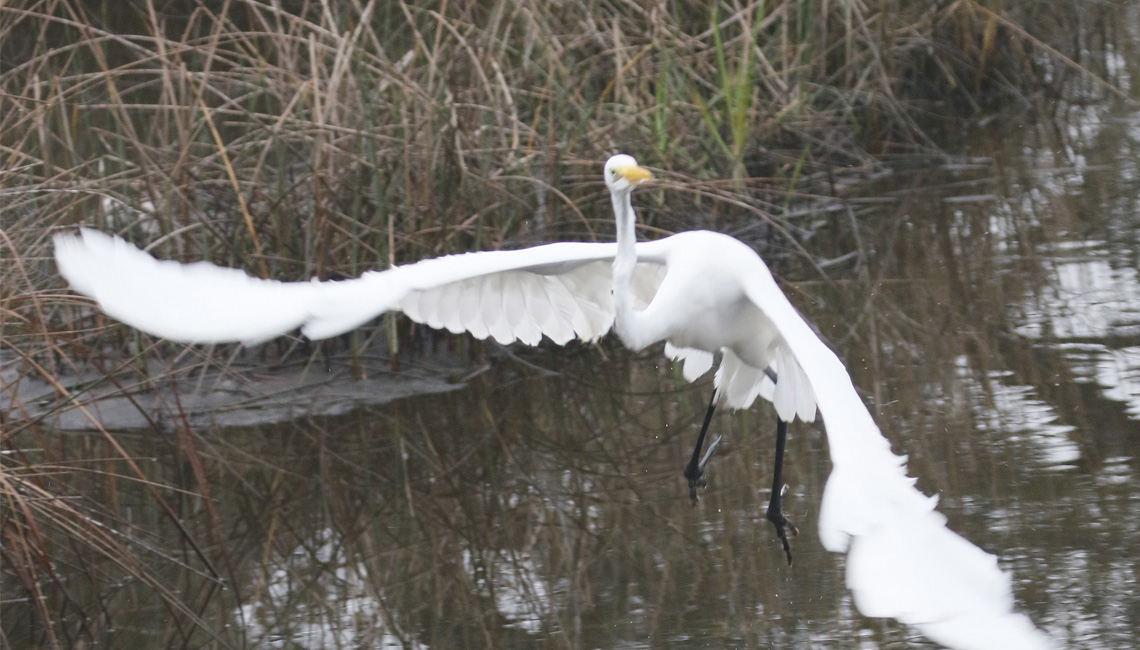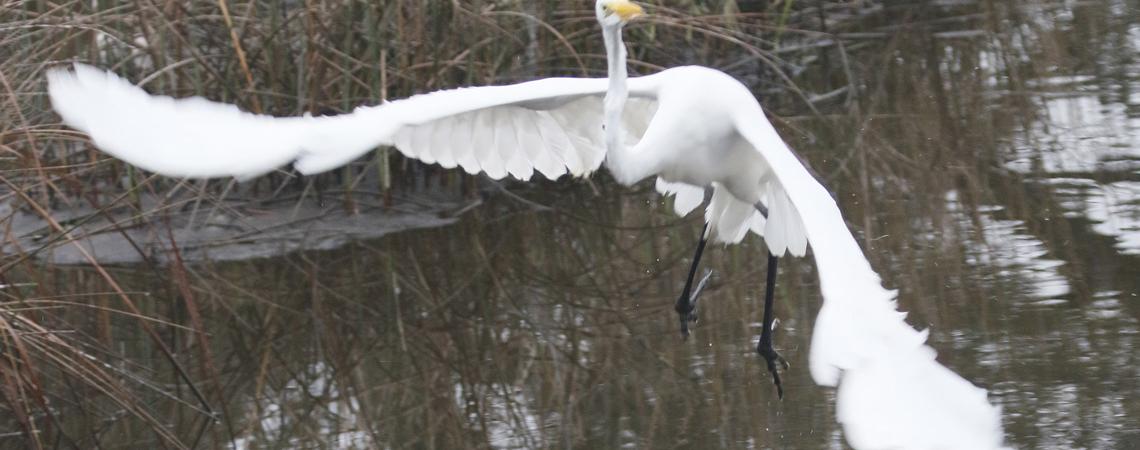Sometimes, it’s good to remember just how far we’ve come in wildlife conservation.
Throughout the history of North America, numerous wild bird species have faced decimation by humans — the passenger pigeon being the most egregious example. Arguably once the most common bird on earth, it was pushed into extinction; the last individual, Martha, died at the Cincinnati Zoo in 1914.
But this is not a retelling of that sad story. Rather, it’s a tale of how several once-persecuted species were rescued from oblivion and are thriving once more.
Feathers from some birds, such as the great egret, were in such demand by the millinery trade that they were worth twice their weight in gold.
During the late 1800s and early 1900s, bird feathers were the fashion fad in the millinery — hatmaking — trade. Some feathers, especially plumes from great egrets and snowy egrets, were in such demand that they were literally worth twice their weight in gold. During the 1890s alone, it’s estimated that 5 million birds were killed annually for their feathers. To make matters worse, those birds were taken almost exclusively during the breeding season, their eggs left to rot or their hatchlings to starve and die.
 Smaller species of wild birds at the time didn’t fare much better. For instance, on two afternoons in 1886 in New York City — on 14th Street in Manhattan, to be exact — ornithologist Frank Chapman began counting the number of dead birds adorning women’s hats, and tabulated 39 species and 173 individual birds. These weren’t just feathers, mind you, but the entire preserved birds themselves: game birds, grebes, shorebirds, woodpeckers, songbirds, even an owl!
Smaller species of wild birds at the time didn’t fare much better. For instance, on two afternoons in 1886 in New York City — on 14th Street in Manhattan, to be exact — ornithologist Frank Chapman began counting the number of dead birds adorning women’s hats, and tabulated 39 species and 173 individual birds. These weren’t just feathers, mind you, but the entire preserved birds themselves: game birds, grebes, shorebirds, woodpeckers, songbirds, even an owl!
Help eventually came from an unlikely source. In 1886, George Bird Grinnell (yes, “Bird” was his real middle name), the editor of Forest and Stream, a hunting, fishing, and outdoors magazine, founded the first Audubon Society. Although the fledgling organization attained a membership of nearly 50,000, it eventually folded.
But it wasn’t the end. Two women, Harriet Hemenway and Minna B. Hall of Massachusetts, resurrected the idea in 1896, with the goal of persuading ladies not to wear feathered hats. This time the organization succeeded, and Audubon societies spread to many states.
To add teeth to its beliefs, in 1902, the Florida Audubon Society hired a warden, Guy Bradley, to patrol Florida’s Gulf Coast and discourage illegal plume hunting. A reformed plume hunter himself (it takes one to catch one, right?), Bradley was shot and killed in 1905 by poachers he was attempting to arrest. Two more Florida wardens died in the line of duty in 1908.
These men did not die in vain, however. Public pressure gradually changed attitudes, and women eventually drifted away from wearing birds as fashion. In addition, two important pieces of legislation were passed to protect wild birds and other wildlife: the Lacey Act of 1900 and the Migratory Bird Treaty Act of 1918, both of which are still in effect today.
But lest you think it was just Americans persecuting wild birds years ago in the name of fashion, consider this ornithological fact: Hummingbirds were once made into jewelry. During the 19th century, millions of hummingbird skins, with their brilliant feathers attached, were shipped from South America and the West Indies to European markets, where they were manufactured into pins, brooches, and other fashion accessories. One London dealer alone imported more than 400,000 hummingbird skins in one year!
 An interesting side note concerning hummingbirds is that Anna’s hummingbird — a species not seen in Ohio — was named for the wife of Prince François Victor Massena, Duc de Rivoli of France. An amateur ornithologist, the prince seemed to know a thing or two about hummingbirds; his collection of 12,000 specimens was eventually sold to the Academy of Natural Science of Philadelphia.
An interesting side note concerning hummingbirds is that Anna’s hummingbird — a species not seen in Ohio — was named for the wife of Prince François Victor Massena, Duc de Rivoli of France. An amateur ornithologist, the prince seemed to know a thing or two about hummingbirds; his collection of 12,000 specimens was eventually sold to the Academy of Natural Science of Philadelphia.
A positive change that resulted from that dark era for wild birds more than a century ago was the creation of the U.S. National Wildlife Refuge System — a total of 568 sanctuaries located at strategic places along our nation’s four major flyways. The refuges today provide safe havens for birds to rest and feed during migration.
In Ohio, those places include Ottawa, Cedar Point, and West Sister Island National Wildlife Refuges, located along or near the southwest shoreline of Lake Erie. Check them out sometime — just please, don’t wear a feather in your hat when you visit.










